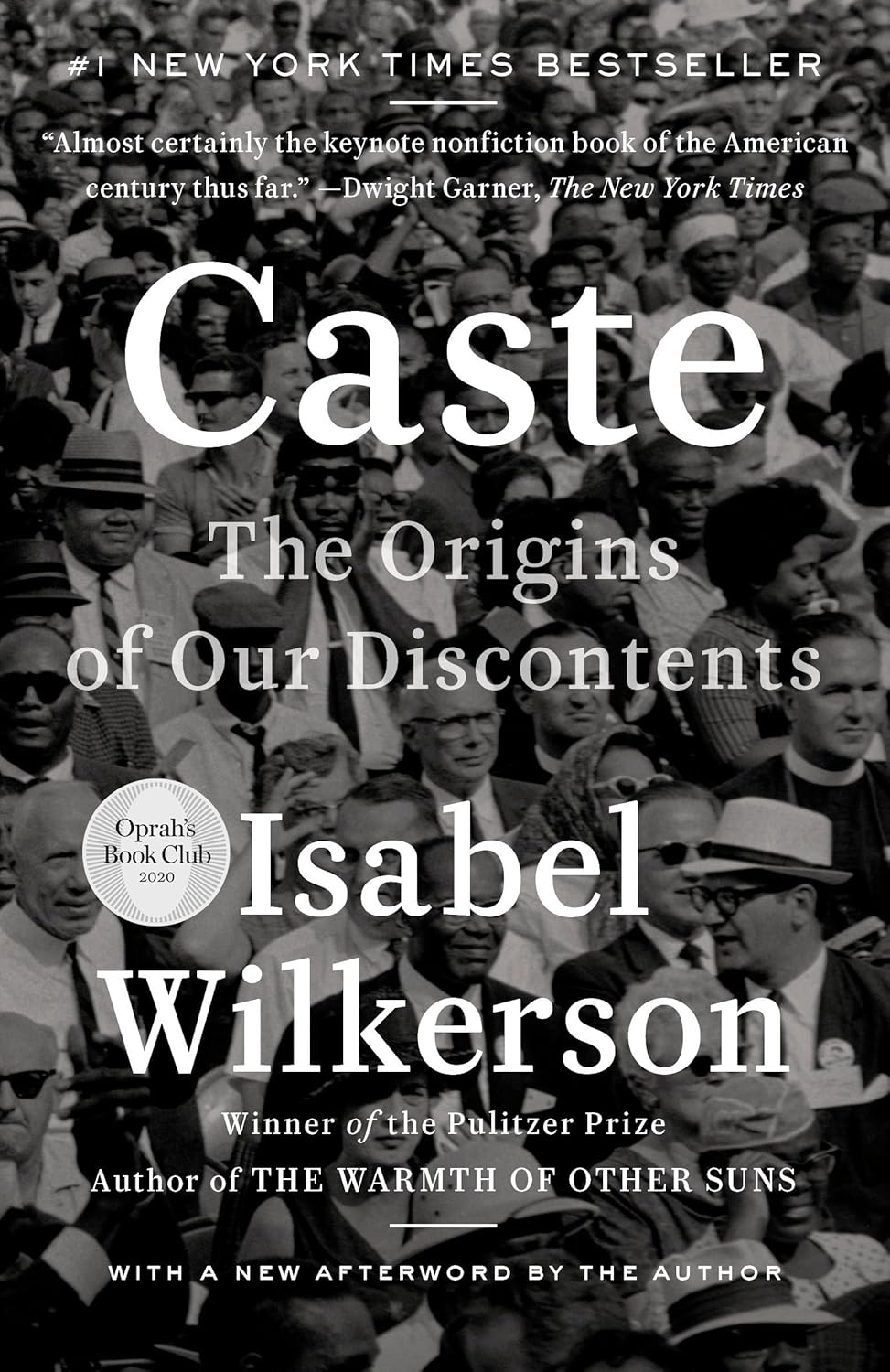Caste by Isabel Wilkerson
The Origins of Our Discontents
Caste: The Origins of Our Discontents by Isabel Wilkerson
Cover
Beyond race, class, or other factors, there is a powerful caste system that influences people’s lives and behavior and the nation’s fate. Linking the caste systems of America, India, and Nazi Germany, Isabel Wilkerson explores eight pillars that underlie caste systems across civilizations, including divine will, bloodlines, stigma, and more. Using riveting stories about people—including Martin Luther King, Jr., baseball’s Satchel Paige, a single father and his toddler son, Wilkerson herself, and many others—she shows the ways that the insidious undertow of caste is experienced every day. Finally, she points forward to ways America can move beyond the artificial and destructive separations of human divisions, toward hope in our common humanity.
Connection
I wanted to read this book after hearing about it on NPR Fresh Air, August 4th 2020.
Main Ideas
Intro: Why does it feel that America is not close to achieving equality and why is lasting change so difficult? This book tries to answer that question by examining casteism.
Ch. 1: The longer structural problems persist, the harder they are to fix. Just like the issues in an old house become our problem, income gaps, police violence, and inequality are problems that we’ve inherited but are now responsible for. Caste is a system of social hierarchy in which people enjoy varying degrees of superiority or are subject to control based on which caste they belong.
Ch. 2: Looking at caste alongside race and slavery can help explain the depth of America’s discontent. Race is an arbitrary and unscientific concept. An example is the “Caucasian” race invented in 1795 after a German professor preferred a certain shape of skull from Caucasus mountains in Russia. Race became a tool to classify people in the transatlantic slave trade. In America, skin color was used to determine caste lines.
Ch. 3: The American caste system has proven to be resistant to change. Jim Crow laws were a government sanctioned method to keep the caste system in place. Black Americans that tried to move up were sabotaged by those in higher castes. Techniques ranging from redlining, to refusing to say “Mr.” when addressing a black man were used.
Ch. 4: A caste system requires a set of foundational pillars. There are eight pillars to every caste system. The first is divine will and the laws of nature. A religious basis can be the foundation for a caste system. She mentions a bible passage about Noah’s 3 sons, one of which Noah cursed. The curse being that his children will be slaves to his brothers. Pillar two is heritability. In colonial America, the mother’s status dictated the child’s caste. Pillar three is endogamy and the control of marriage and mating.
Ch. 5: The pillars of caste include an obsession with pollution and a process of dehumanization. The fourth pillar is purity versus pollution. If a black person was in a pool, it would have to be drained and cleaned before a white person could use it. The fifth pillar is occupational hierarchy. The argument that a group has to do the menial jobs for a society to function. The sixth pillar is dehumanization and stigma. The tactic is to dehumanize a group, as it’s easier than dehumanizing and individual.
Ch. 6: The final pillars include terror and inherent inferiority. The seventh pillar is terror as enforcement and cruelty as means of control. Whippings, hangings, and burnings were tools of enforcement. The eighth pillar is inherent superiority versus inherent inferiority. An example is forcing the lower caste to wear shabby clothing.
Ch. 7: In the second half of the twentieth century, people in the castes above African-Americans began to feel threatened by a changing society. Once Jim Crow laws ended, efforts were made to correct imbalances in housing, employment, and education. Dominant castes began to feel threatened. Part of why they felt threatened is because caste systems create group narcissism. Group narcissism and racial narcissism can lead to fascism.
Ch. 8 Monuments and memorials can help support or dismantle the caste. Everyone is susceptible to propaganda. In the United States, taking down confederate statues was met with resistance. In Germany, memorials were created to honor the victims of Nazis.
Ch. 9 We can support those who break the barriers, and we can chip away at the pillars. It’s important to make people aware of the system in the first place. Support people who have broken free from subordinate classes. Make sure people see individuals with things in common rather than parts of a group. Empathy allows us to see each other as individuals.
